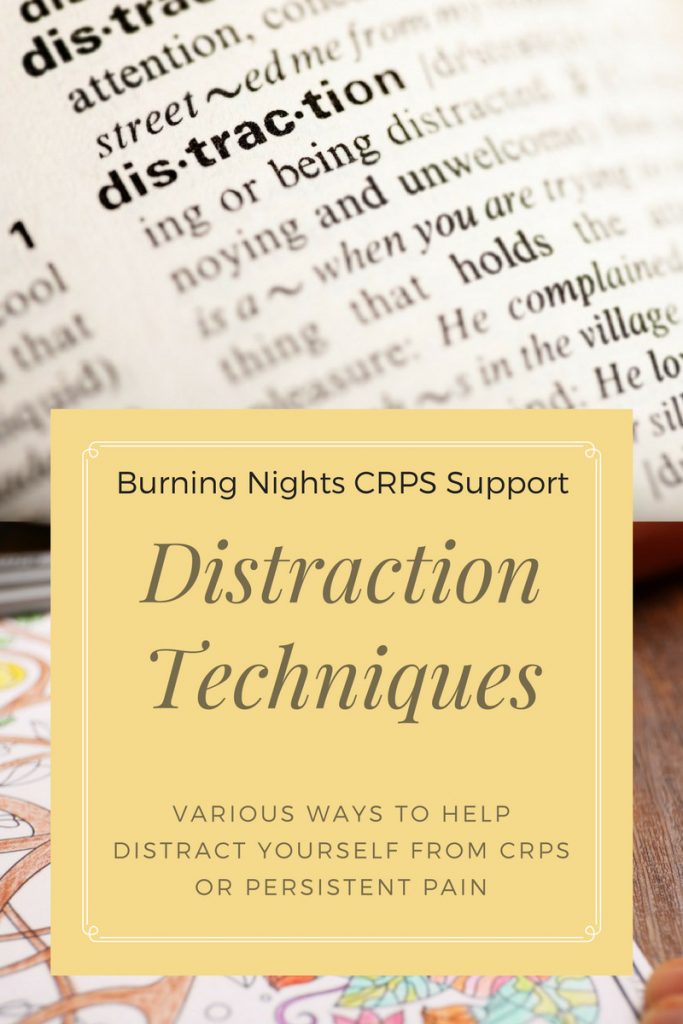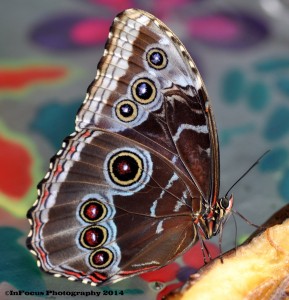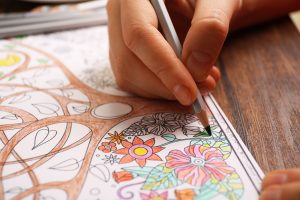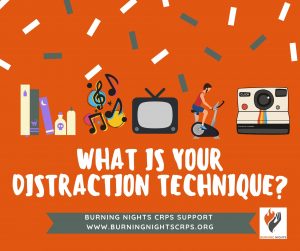We use cookies to improve your experience. By accepting you agree to our cookie policy


Persistent pain affects approximately 10 million people in the UK every day. On average, people in the UK, mainly females, take 55 days per year off work sick due to chronic pain. Distraction techniques are one way that can help those who live with chronic pain that does not involve medication.

The aim of distraction techniques or distraction methods is to try and take your attention away from the pain to something entirely different and then absorb yourself in that activity. Examples of distractions include listening to the radio, taking the dog for a walk, reading, watching television, and cooking or baking. All these things have the potential to take your full attention away from the pain without you even realising it.
Consider what you do when you have a pain flare up. For many, they might reach for the tablets, sit a dark room and cry. If this sounds like you, then distraction might be worth a try to see if it can help to reduce the impact of future flare ups.
Distraction is a temporary way of turning mind and thoughts to something other than just the pain. Distraction techniques are a self-managing tool to help calm and relax your mind. So, while you wait for the medication to work, you could try playing games, board games, using a computer, reading, painting, drawing, craft-work, photography or even knitting, which has become quite popular with younger people now. The idea is that attention engaged in a non-pain demand cannot be applied to pain, thereby producing analgesia.
The Children's Hospital of Pittsburgh say on their website that "…distraction facilitates coping, helps manage pain, decreases the use of pharmacological methods…"
Virtual Reality can be used as a tool for distraction from your pain. A game called 'SnowWorld' has been created by Professor Hunter Hoffman and Professor David Patterson from the University of Washington Harbor View Burns Centre in Seattle. In an article for the BBC, Professor Hoffman said "The aim of the game is “to make a very attention grabbing experience for the patient and basically to give them a place to escape from their pain” says Professor Hoffman."
In a research article from Weiderhold, B.K. at al. (2014), they discussed the use of Virtual Reality as a distraction technique for chronic pain: "One way to help is by using virtual reality (VR) to draw attention away from the patients' mental processing, thereby decreasing the amount of pain consciously experienced by the patient."
In the Weiderhold, B.K. et al. (2014) study they found that virtual reality: "… may change how the brain physically registers pain, not just the perception of pain stimuli." The study concluded that, "Overall, the results of this study show VR is effective at reducing pain." and "Several patients reported encouraging feedback as well, such as "this is the first pain relief I have had in 3 years", "I was so busy playing I forgot about my pain…""
A fellow CRPS sufferer, Jo, uses photography as her way of distracting her thoughts and mind away from her chronic pain. Jo has had Complex Regional Pain Syndrome for approximately 13 years, with the first 3 years being undiagnosed.
 At the beginning, like most, she found it extremely difficult to deal with and adjust to the condition. Now, 13 years down the line, she says she copes fairly well with her "daily cocktail of drugs" to try and keep her pain levels under some sort of control.
At the beginning, like most, she found it extremely difficult to deal with and adjust to the condition. Now, 13 years down the line, she says she copes fairly well with her "daily cocktail of drugs" to try and keep her pain levels under some sort of control.
Jo is unable to stand for too long or walk very far without stopping, she is never pain free but that has never impacted on her photography.
Photography can be something that you can do sitting down or standing up, which makes it a great distraction therapy. Jo says it gives her something else to focus on and think about, it's not just a case of clicking away for her, she likes to try and capture an image that she can look back on and say "that’s a great shot!" She's particularly interested in what is called macro photography or close up to a lay person.
Something truly great has come out of her chronic pain in a way. The distraction of photography for Jo is most welcome and she can easily spend a few hours 'clicking away' when she’s out and about. Jo is proud of her photography and she likes to think that other people enjoy looking at the end results. Her passion for photography is totally obvious when you see her pictures, they are truly amazing!
If you would like to see more brilliant photos, visit Jo Waterland’s Flickr page.
You don't have to go out and spend lots of money on expensive equipment on your 'distraction', you can just as easily download a free book on Kindle or listen to some music on the radio or just watch the television. You could perhaps go to the cinema to watch a film.
If you are listening to some music, to keep your mind from wandering you could click your fingers, sing along with the music, or gently tap the beat with your hand or foot. Loud or high pitched music can also affect your pain levels, so be careful not to make your pain worse by putting the music really loudly, lower the volume to a level that doesn't cause your pain to spike.
Another distraction is to do some crafts; knitting, art, drawing, model making, painting, needlework, card making, those sorts of things. Go to your local craft shop, perhaps when your pain isn't too bad, and have a look around for something you may be interested in. Then, when you do have a pain flare up, you have something to do to try and distract your mind from the pain.
 Adult colouring is a very popular and easy way to help alleviate stress and anxiety. The repetitive motions and sense of creativity and accomplishment can help people to relax. Research shows that adult colouring can have a positive effect on a stressed or anxious person's state of mind (Davis, S. 2016).
Adult colouring is a very popular and easy way to help alleviate stress and anxiety. The repetitive motions and sense of creativity and accomplishment can help people to relax. Research shows that adult colouring can have a positive effect on a stressed or anxious person's state of mind (Davis, S. 2016).
There is a series in the UK called Adult Art that you can buy from your local newsagent or supermarket. You can also download FREE designs on the internet, such as on Pinterest and through websites, such as:
Studio Magda Polakow is an Etsy shop with lovely hand drawn adult colouring books and pages.
Visit the Burning Nights CRPS Support Pinterest board for Adult Colouring.
The 'Coloring Pages Bliss' website has some great FREE designs just for chronic pain management. Jennifer Stay, the woman behind the website, has created 5 simple steps to "Coloring Bliss For Pain Relief". The 5 steps are explained on the website, but in simple terms they are:
Designs can be all most anything and the choice of colours are your own. There is no right or wrong way to colour your design.
There are adult art colouring books that can be purchased via Amazon, for example:
There are even adult art colouring books specifically for men out there, for example:
As you can imagine, there are a large number of distraction techniques that people can use to help them cope with their Complex Regional Pain Syndrome (CRPS) or chronic pain. The use of distraction techniques will depend on where you are when you need to use them. If you are out of the house you may want to play music from your phone or listen to an audio book, if you are at home then you will have an array of distraction techniques that you can use.
Other examples of distraction techniques include:
 Sometimes people believe that distraction techniques don’t work for them because their CRPS or chronic pain is too intense and that it doesn’t give any pain relief.
Sometimes people believe that distraction techniques don’t work for them because their CRPS or chronic pain is too intense and that it doesn’t give any pain relief.
Distraction techniques are not meant to replace any medication or anything your specialists have given you. They are simply a natural and alternative way to to try and 'trick' your brain into thinking other thoughts and concentrate on something other than your chronic pain or your flare up.
Take a look at our page on other Alternative Therapies for CRPS and persistent pain.
*Burning Nights CRPS Support is a registered charity. We are not doctors or specialists and therefore cannot make any diagnosis, provide treatment, etc. You must speak to your doctor or healthcare professional before trying anything new or different to your usual pain management regime. This help is not meant to replace your current treatment regime or medication. If in doubt please contact your doctor or pain specialist first.*
*We do not endorse any of the books, websites or links used in this website.*
Last Updated: 31/01/2020
We use cookies to improve your experience. By accepting you agree to our cookie policy
 £
£